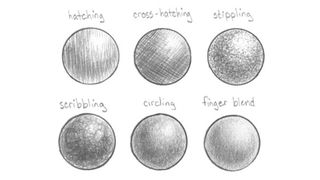Expert advice on pencil shading techniques: 5

Here's a list of the top pencils available if you need new tools. Additionally, you can expand your technical proficiency by using our compilation of the greatest how-to drawing tutorials or our guide to pencil drawing approaches.
Pencil shading techniques: Which pencils should you use?
After switching my attention from digital to traditional work, I utilized HB mechanical pencils for a very long time. But as soon as I switched to using ordinary pencils, I could see an improvement in execution that I was unable to achieve with just mechanical pencils. Since then, I've learned how to combine techniques to create various textures, tones, and results, which I use to make my pieces.
I could see the obvious difference in shading using a 4B versus a 4H pencil, for example, and it wasn't just the different HB hardness pencils. I discovered that the pencil's tip produced remarkably varied
1. Choose pencils carefully
To ensure you know exactly what kind of results you will receive when using them in your work, I advise having a number of robust pencils on available. Whe results as well. A rounder tip, for example, created a larger, softer product and was easier to use.
